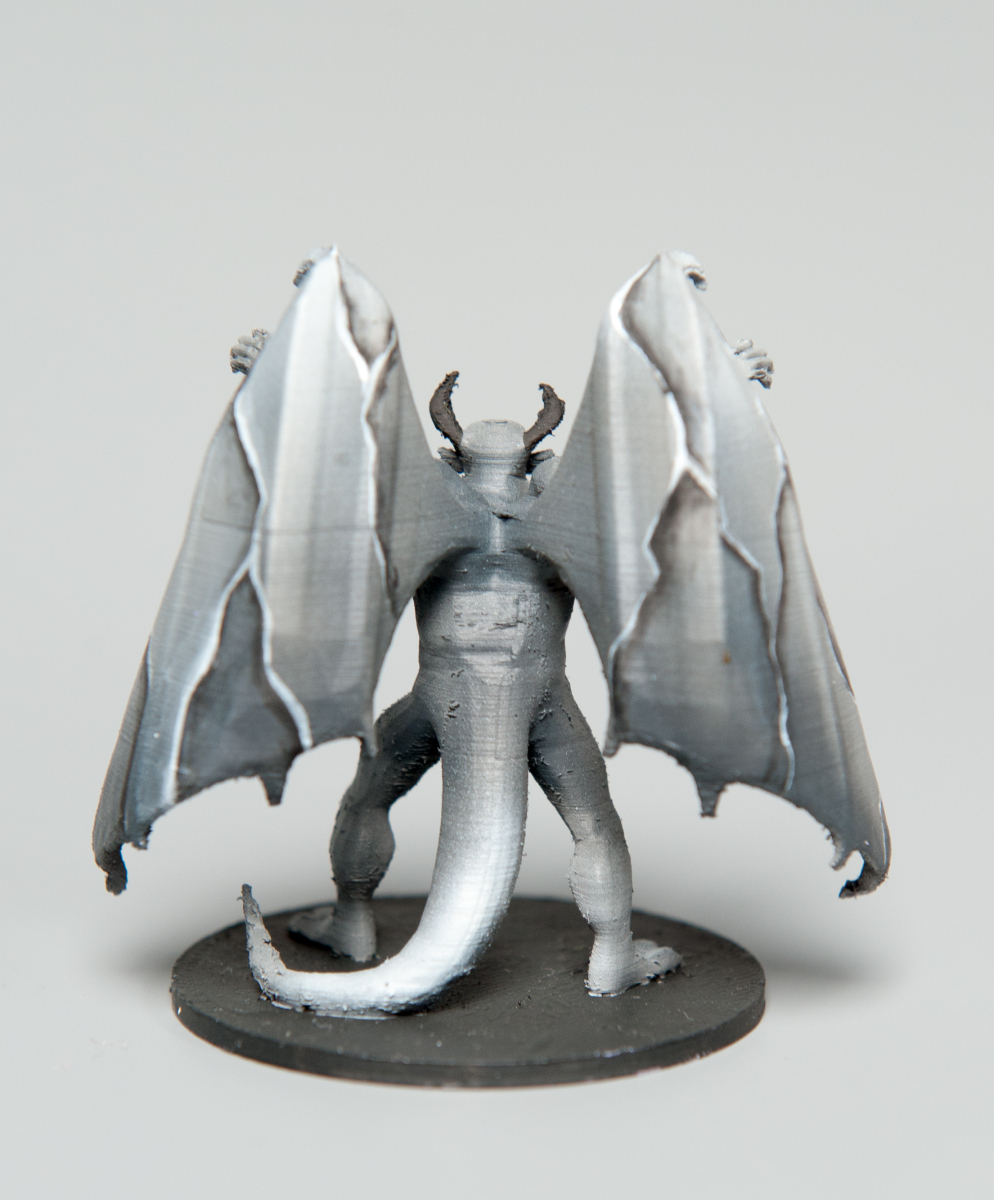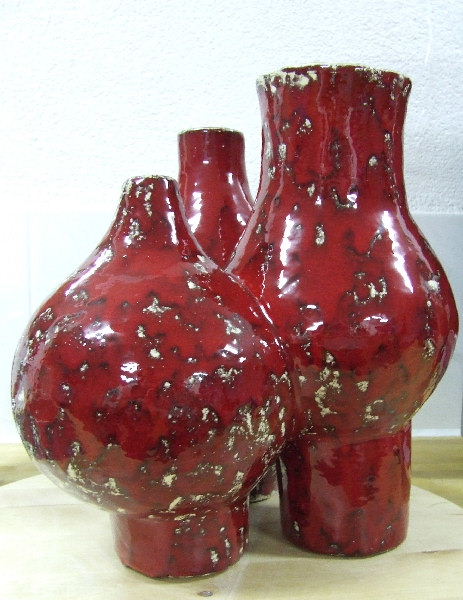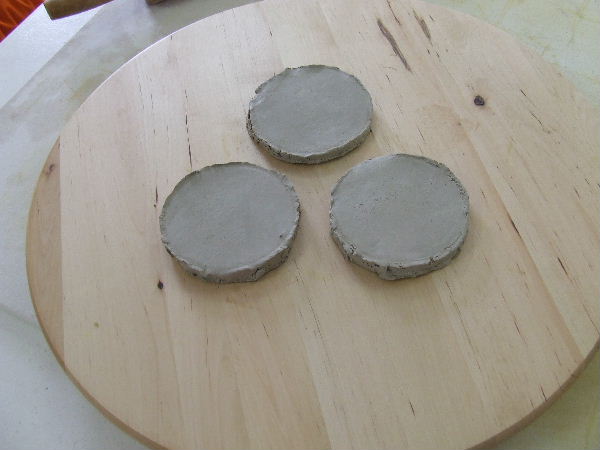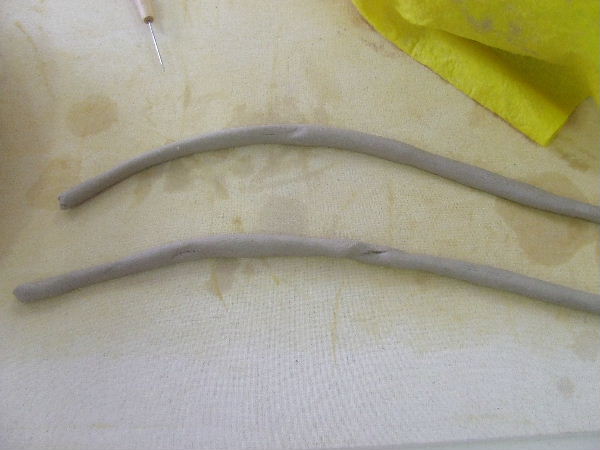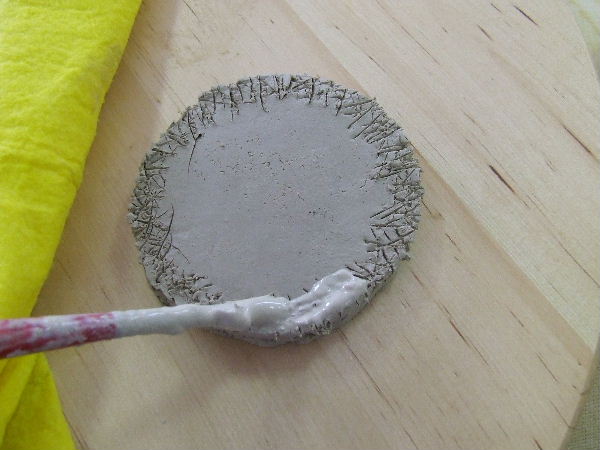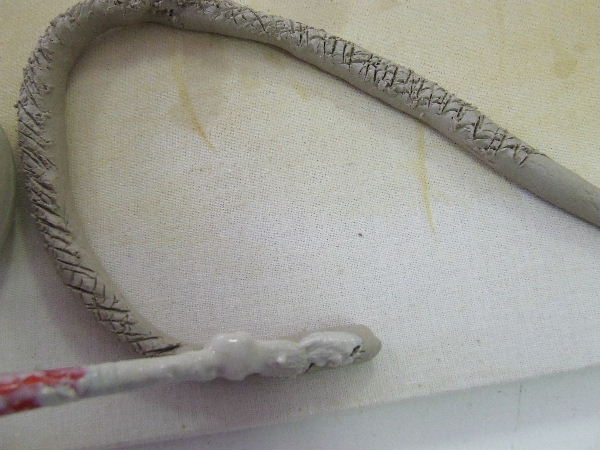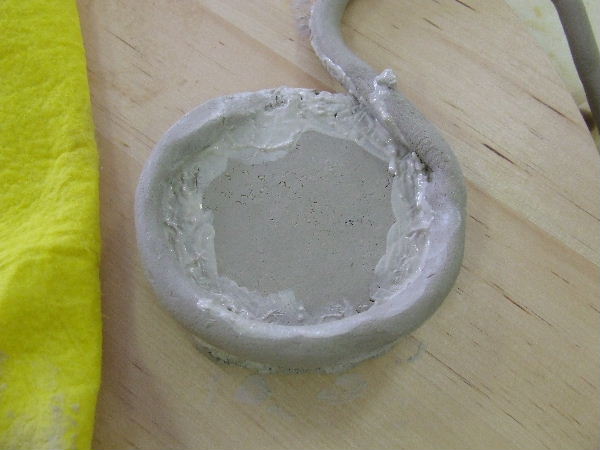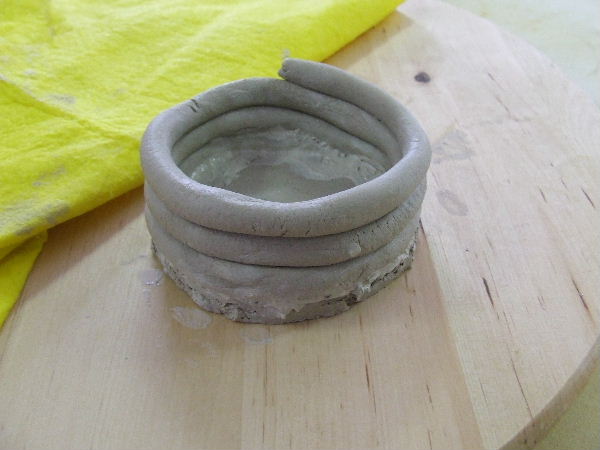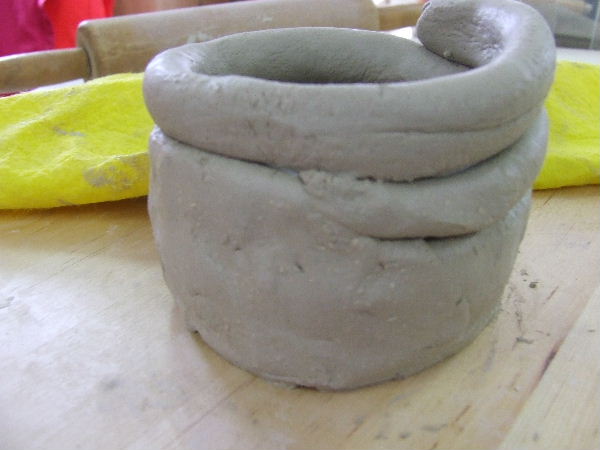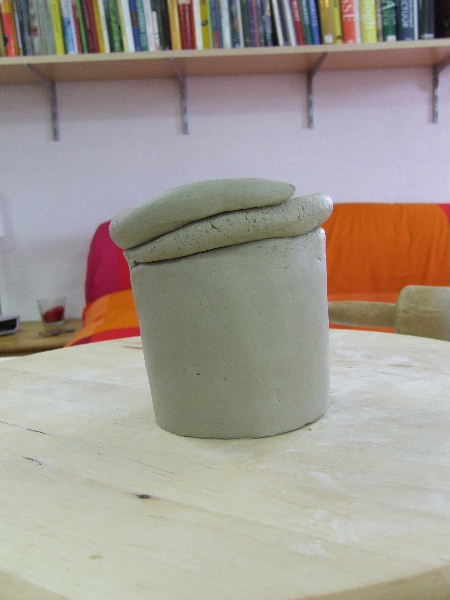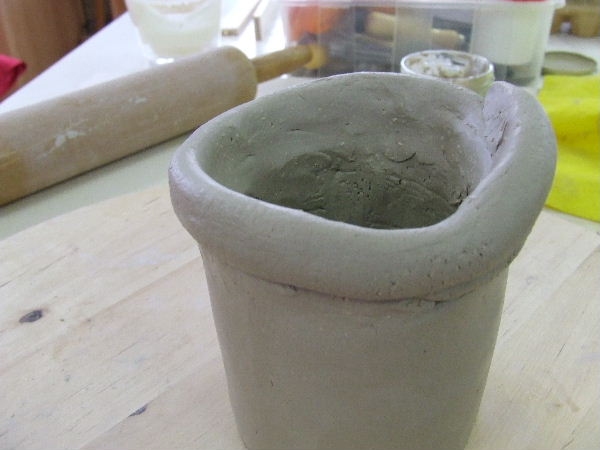| I want to create three forms joined together. As a base, I cut a round slab from a large clay sheet for each form. The slabs all have roughly the same diameter. To get nice round shapes, you can use a vase or a pot as a template for cutting. |
| I will build the forms out of rolls. Therefore, I prepare some rolls with a diameter of about one centimeter. The length of the rolls is not so important; you just continue with a new roll where the previous one ended. |
| sing a scoring tool, I make small scratches in the base plate where I will place the rolls. Scoring ensures that the slip applied between the base plate and the rolls adheres well. |
| I also score one side of the rolls. After scoring, I apply slip with a brush to both the scores on the rolls and the base plate. I usually have a pot of slip ready, so I always have it on hand. I prefer using a brush to apply the slip, but you can also use your fingers. |
| Now, I place the clay rolls on the base plate, neatly along the edge, with the curve of the rolls slightly over the edge. Press the rolls firmly; the slip should create a vacuum between the rolls and the base plate. |
| I build up about three layers with rolls. The neater you do this, the easier it will be to smooth out later. The form will also become more refined. It’s worth being precise here, especially with the first layers, as they determine the shape. Only the first layer needs to be scored and slipped. This is unnecessary for the subsequent layers. |
| Smooth the rolls together by moving your finger up and down vertically over the rolls. Do this on both the outside and inside. The clay should be evenly pushed into the grooves between the rolls. You can further refine the sides with a rib tool. |
| If you are satisfied, continue building up. Sometimes the edge becomes uneven in height. You can carefully cut it to the same height with a knife before continuing to build. |
| The shape needs a bulge. Therefore, I place the rolls progressively further outward on the underlying layer. The further outward, the wider the form becomes. Sometimes you need to make the rolls slightly thicker to maintain the form’s stability. |



